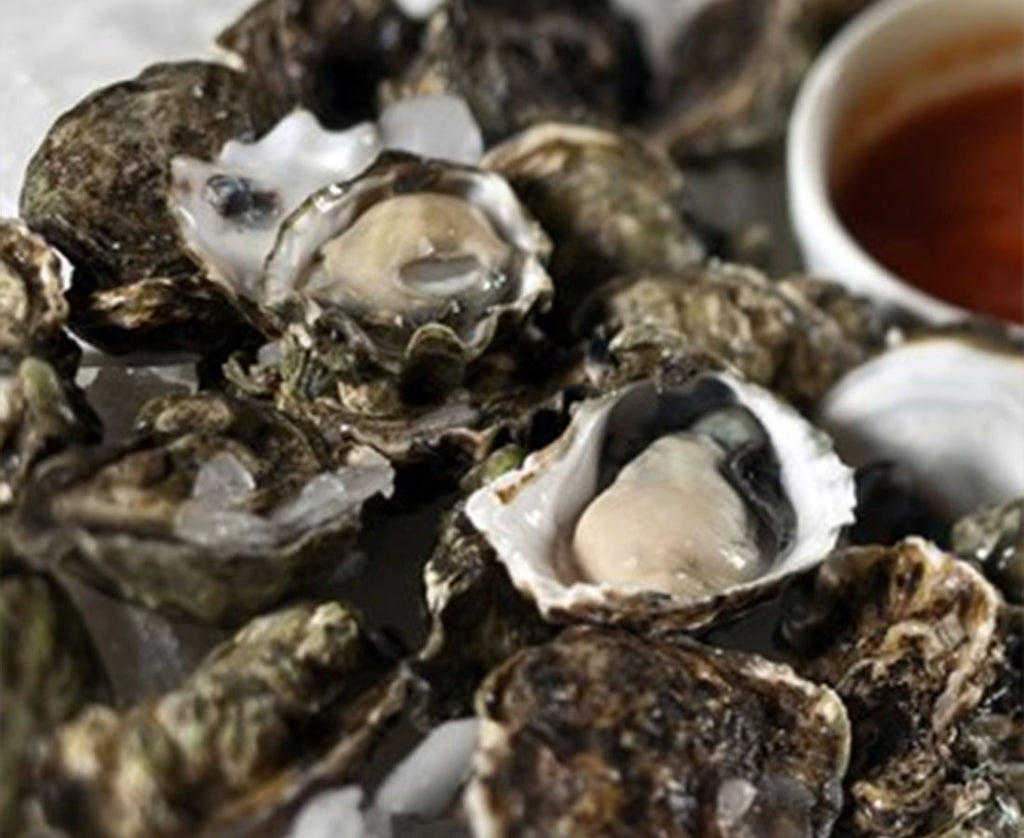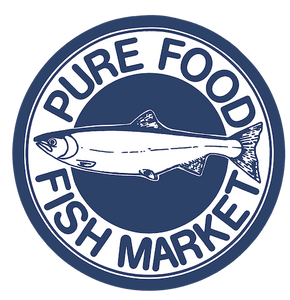FRESH BLOG
For all things Fresh Seafood, cooking inspiration, and more!

How to Properly Shuck an Oyster
Introduction
Have ever wondered how to shuck an oyster? Oysters are an incredible seafood that are prepared in a wide variety of ways and enjoyed by people around the world. A versatile food, oysters can be eaten as an appetizer or full meal, and pair well with a range of seasonings, side dishes and beverages. Although small, oysters have immense health benefits and contain an impressive amount of key vitamins and minerals. Whether they are prepared raw, grilled, or baked, knowing how to properly shuck an oyster is essential for their proper preparation and consumption. This article will thoroughly explain how to properly shuck an oyster, including the required tools, techniques and tips for success.
What are the Different Parts of an Oyster?
An essential part of learning how to properly shuck an oyster involves understanding its basic anatomy. Knowing how to properly preserve and enjoy each piece of the oyster will help prevent waste and ensure that the entire mollusk is used.
Oysters are a bivalve mollusk, which means their outer shell has two separate halves connected by a hinge and small muscle called the adductor. The top half of the shell is larger than the bottom and has a wider, fluted structure. The oyster’s primary organs and muscles are contained within the lower portion of the shell. Once you know how to shuck an oyster with an oyster knife you will be able to apply several different methods of separating the two shell halves in a safe and effective manner.
Oyster liquor is the natural liquid contained in the oyster’s shell. It helps keep the oyster alive, and also preserves freshness after the oyster has been shucked but not yet eaten. This liquor is edible and adds a briney flavor to the oyster when it’s all eaten together.
Once the top shell is removed, the oyster’s flesh will be exposed for easy removal and eating. The interior parts of an oyster are difficult to distinguish visually, but they include the gills, stomach, heart, mantle and other internal organs. Don’t worry about separating any of the parts of the oyster flesh as it’s all edible. All you need to know is how to shuck an oyster and pair it with your favorite sauces, dishes or drinks!
What are the Different Types of Oysters?
Even if you know how to shuck an oyster, you may not be aware of the significant variations in flavor, appearance, size and texture between different types of oysters. Some of the most common varieties of oysters, including ones you can find usually at your local seafood market, include:
- Atlantic Oysters - Also called “Eastern oysters”, these typically have a larger shell and are known for their distinctive briny flavor.
- Pacific Oysters - found globally, this species of oyster is also on the larger side and is often described as having a slightly sweet flavor and creamy texture.
- Kumamoto Oysters - one of the smaller oyster varieties, these are thought to have originated in Asia but are now produced internationally. Their noticeably green shells are quite small, and feature a slightly sweet, fruity flavor (sometimes called the “Chardonnay of oysters”).
- Belon Oysters - often referred to as “European Flats”, these oysters come from Europe but now grow throughout the north eastern coast of the US. The Belon oyster flavor profile is described as slightly metallic or coppery and less briny than many other oyster species.
- Hood Canal - a wide variety of different oyster types are grouped together and generally referred to as Hood Canal oysters due to their popularity and widespread growth in Hood Canal, WA. The flavor and appearance to Hood Canal oysters changes significantly depending on the specific location of their harvesting.
How to Properly Shuck an Oyster: a Step-by-Step Guide
Below is a step-by-step guide that will help you learn how to shuck an oyster and hone this skill with confidence.
- Select an appropriate tool, preferably an oyster knife.
- Protect your hand by wearing an oyster glove, oven mitt, or towel in the hand holding the oyster.
- Insert the knife between the top and bottom shell where there is a small, naturally occurring gap (found near the oyster’s hinge at the narrower end of the shells).
- Make sure the cupped side of the oyster shell is facing down as it will catch the oyster’s liquid (this is the larger of the two shell halves). This liquid, called liquor, helps to keep the oyster fresh before it’s eaten.
- Push the shucking tool in between the shells far enough to get the leverage needed.
- Twist the oyster knife or other tool repeatedly in an upward fashion. It might take a few twists, and you should feel a noticeable “pop” when the hinge connecting the top and bottom shells is broken.
- Continue to slide the knife between the shells until both halves are cleanly separated (once the adductor muscle has been cut).
- Pass a clean cutting tool underneath the oyster flesh to cut the second adductor muscle and release the edible portion from the shell.
What Not to Do When Shucking an Oyster
Learning how to properly shuck an oyster also involves knowing what not to do when opening these delicious delicacies. Here is a list containing some of the most common mistakes people make if they don’t know how to properly shuck an oyster:
- Don’t try to chip the shell to create a bigger opening.
- Don’t try to smash the shell to open the oyster.
- Don’t cut the oyster flesh beyond separating the adductor muscles to help with opening the shell and loosening the oyster meat.
- Don’t dump out the oyster liquor.
- Don’t hold the oyster barehanded while it’s being cut as a sharp shell or the cutting tool could both cause injuries.
Tools for Shucking an Oyster
If you are learning how to properly shuck an oyster it is important to select the right tool for the job. Learning how to shuck an oyster with an oyster knife will make the whole experience easier and safer. An oyster knife has several important features that make it a superior device. An inexpensive tool, the oyster knife blade is just the right length to effectively and safely separate oyster shells. The blade on an oyster knife is thin enough to easily slide between the shell halves. Lastly, a proper oyster knife will feature a fairly blunt blade and a wider handle (or guards at the top of the handle) to prevent the blade from sliding past the shell.
If you know how to shuck an oyster with an oyster knife but you don’t have one handy, a few alternative tools that might suffice include a flathead screwdriver or a common table knife. A sharp knife blade is not required to properly shuck an oyster.

